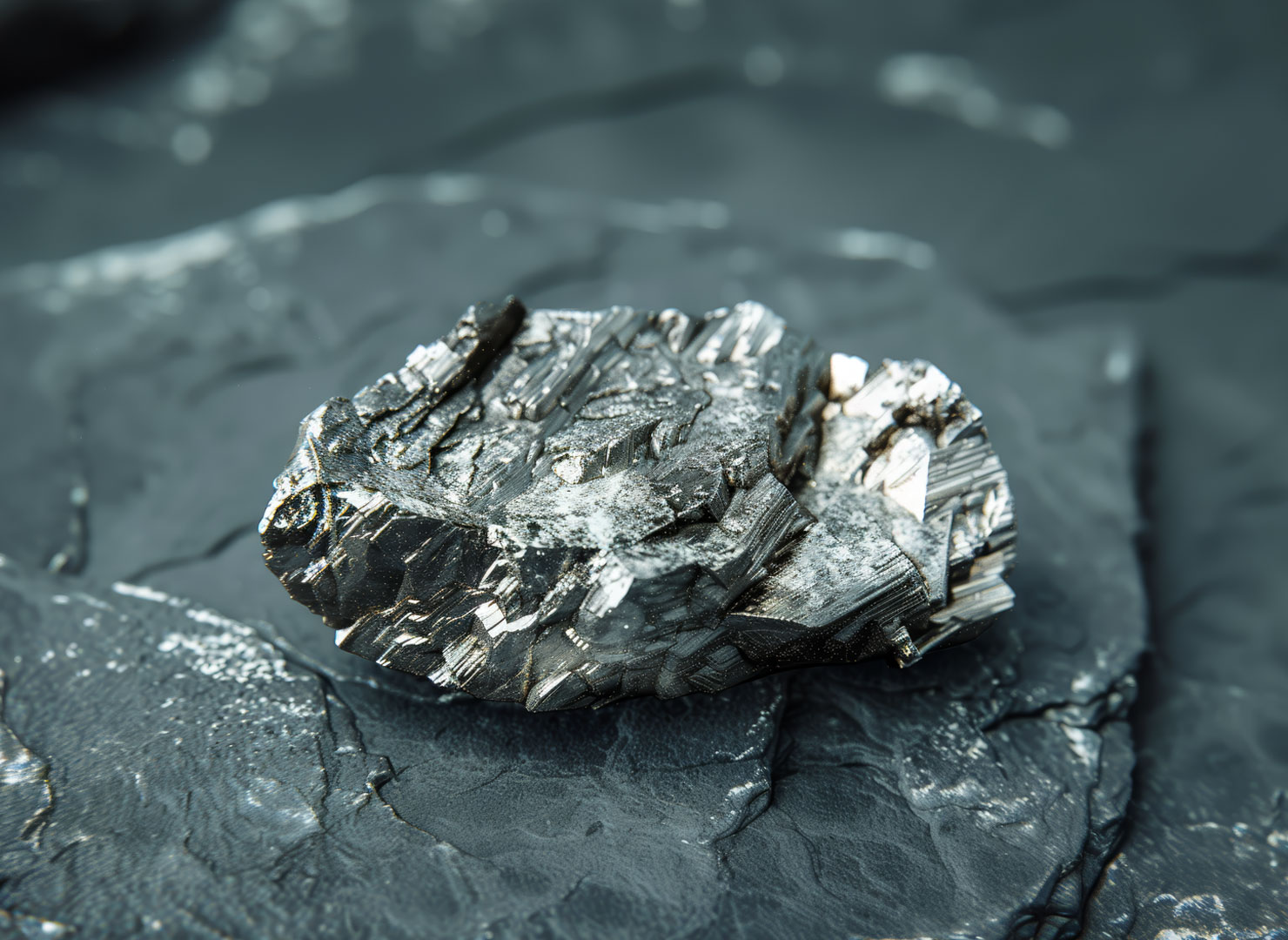The Element Gadolinium
On this page you can find out more about the rare earth element
Name: Gadolinium
Symbol: Gd
Ordinal number: 64
Density: 7,90 g/cm3
Melting point: 1.313 °C
Boiling temperature: 3.266 °C
Gadolinium is one of the lanthanidesA group of 15 elements with chemically very similar properties. in the periodic table.
Introduction
Gadolinium, a Versatile Rare Earth Element
Gadolinium has a wide range of applications, from nuclear power to medicine. This makes the rare earth element a sought-after all-rounder.

55 Years From Discovery to Extraction
In 1880, while investigating the mineral samarskite, Swiss chemist Jean Charles Galissard de Marignac discovered a previously unknown oxide. A few years later, other scientists confirmed the existence of the new element and named it after the Finnish chemist Johan Gadolin, who had investigated the first known mineral containing rare earths at the end of the 18th century. Pure metallic gadolinium couldn’t be extracted until 1935.
Main areas of application for gadolinium

The Discoverer of Gadolinium
Born in Switzerland in 1817, the chemist Jean Charles Galissard de Marignac studied in Paris and was later a student of Justus Liebig in Giessen (Germany). Galissard de Marignac spent most of his career as a professor of Chemistry and Mineralogy in his native city of Geneva. The Swiss not only researched rare earths but also produced one of the first complex inorganic acids.
Characteristics
Gadolinium Is Plastically Deformable
This shiny silvery to gray-white metal is ductile, i.e., plastically malleable, and forgeable. Gadolinium forms an oxide layer in moist air.
Areas of Application
From Permanent Magnets to Nuclear Power
Gadolinium can be added to permanent magnets made of the alloy neodymium-iron-boron, which is used in technologies such as electromobility and wind power. Gadolinium is also used as an electrolyte in stationary fuel cellsStationary fuel cells are electrical energy sources considered to have a promising future due to their environmental friendliness and efficiency.. Other applications include shielding and control rods in nuclear power reactors, alloys, lighting, catalysts, magnetic coolants, and microwave technology. Gadolinium is also used in the medical field, where it is used in MRI contrast agentsMRI stands for magnetic resonance imaging..

Medical Technology
Rare earths are used in medical diagnostic and treatment technologies, including X-ray machines, MRI machines, nuclear medicine, prostheses, implants, and medical lasers.
Learn more

Pigments
One of the first uses of rare earths was to color glass and enamel. Rare earth pigments produce colors, including yellow, blue, green, pink, violet, and orange.
Learn more

Lighting
Rare earths are used to produce classic fluorescent tubes, modern energy-saving lamps, and LED lights. The raw materials are also used in devices with picture tubes, tablets, and smartphones, where they produce red pixels.
Learn more

Nuclear Power
Nuclear reactors generate energy by splitting atomic nuclei. Nuclear power is currently making a comeback in many countries. This trend could further increase the demand for rare earths, some of which are used in reactor control rods.
Learn more
Deposits
Ion Adsorption Clays: Complex Separation Necessary
Due to their strong chemical and physical similarities, rare earths always occur in minerals such as bastnäsite and monazite. Ion adsorption clays are another significant source of heavy rare earths such as gadolinium. This type of deposit is mined almost exclusively in China and Myanmar. After extraction, rare earth elements must be chemically separated in several complex steps.
The map shows the regions of the world where most heavy rare earths are mined.

Recycling Could Grow in Importance
Both the EU and the US classify rare earths as critical raw materials. Only a handful of countries are satisfying the increasing demand for rare earths for various technologies, as the minerals are mainly mined and processed in China. Although gadolinium is one of the rarer and lesser-known representatives of this group of raw materials, it is required for many industrial purposes. Recycling could become more important in the future, but the current recycling rate is only around two percent. By comparison, the recycling rate for iron and steel is up to 90 percent.
Raw Materials Trading Industrial Customers
TRADIUM trades in all industrially relevant rare earth oxides. Choose from a wide range of specifications and take advantage of the option to reserve batches for the long term.
Purchase of Physical Assets for Private Customers
Benefit as a private customer from the exciting market for rare earths as a physical asset. You can find out here what opportunities TRADIUM offers and what tax advantages a purchase of raw materials entails.